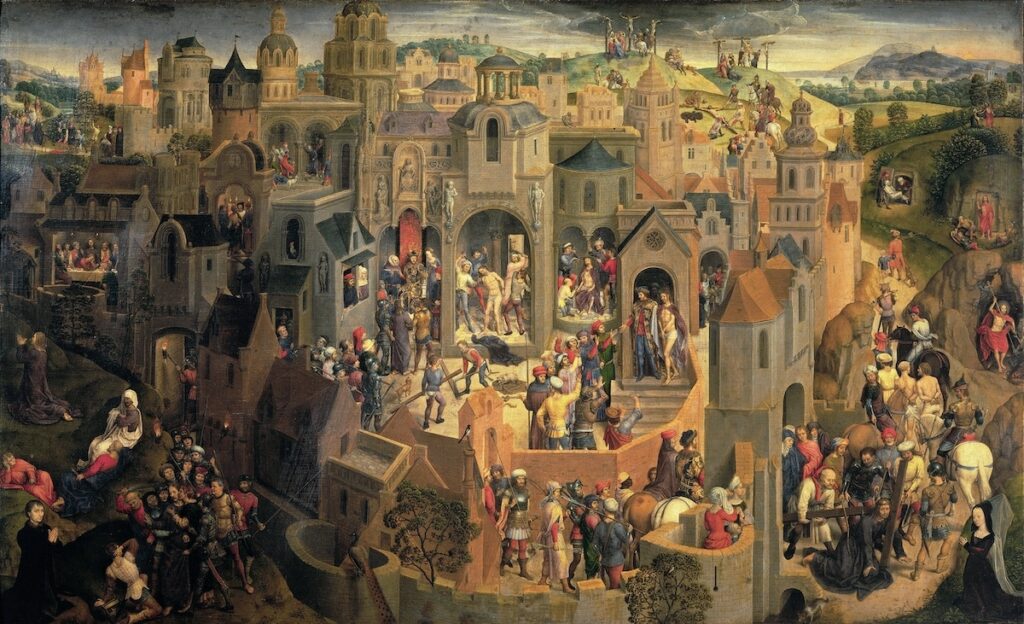
Christian artists throughout the centuries have done us a great service by aiding our reflection on God’s Word. Especially during Holy Week, as we meditate on Christ’s Passion, we can find an abundance of beautiful artwork that helps direct us to Jesus.
Flemish artist Hans Memling (c. 1440-1494) created just such a painting. Memling was influenced by other artists of the Northern Renaissance such as Jan van Eyck (you probably know his Adoration of the Lamb from the Ghent Altarpiece), and especially his own teacher, Rogier van der Weyden. Around the age of twenty, Memling began his own very successful workshop in Bruges, and he eventually became one of the wealthiest citizens there. He had three children with his wife, Anna de Valkenaere, before she died in 1487.
Memling’s Scenes from the Passion of Christ (1471) is a narrative scene, encompassing the events from Jesus’ entrance into Jerusalem on Palm Sunday to his appearances to the disciples after his resurrection. The narrative begins in the top left corner of the painting, moves down and across the center, then back up to the top right corner. (If you look very closely here, you can see Jesus on the shore of the Sea of Galilee and walking on the road to Emmaus.) The piece itself was made for one of Memling’s patrons named Tommaso Portinari, possibly as an altarpiece for his home altar.
Several features of this painting serve to captivate the viewer. Memling used oil paint on a wood panel (typical of Northern Renaissance artists) to create rich, deep colors. The movement of the figures in each scene is dramatic and vivacious, almost giving the impression of actors on a stage. The sunrise in the top right corner casts a warm glow of light on most of the painting, while also concealing in shadow the dark scenes of Gethsemane and Christ’s arrest. Like many other artists of his day, Memling did not attempt a “realistic” setting for the painting: he dressed many of his figures in a modern style, and he structured Jerusalem something like a medieval castle. Yet Memling’s striking architecture, landscape, and costumes fit his telling of a history that took place for all people in every age.
Paintings like Memling’s Scenes from the Passion of Christ are wonderful tools for teaching. Even very young children, if they are familiar with the Gospel narrative, can identify the key scenes and characters. Memling’s chronological journey from one place in Jerusalem to the next can help review the order of events in the Gospels. The expressions and gestures of the figures bring to life the reality of the Passion history—how Christ suffered as a man at the hands of men. And finally, the painting pairs seamlessly with several hymns that also tell the Passion as a chronological narrative, such as “Christ the Life of All the Living” (LSB 420), “My Song is Love Unknown” (LSB 430), and “Lord Jesus, Thou Art Going Forth” (TLH 150).
What a rich heritage we have as Christians. And what a rich time of the Church Year we have right ahead of us! May our Lord bless the coming days for you and your families.
In Christ,
Miss Hahn

